Rock River Arms AR-10
Loads for a .243 Winchester
feature By: Patrick Meitin | March, 22

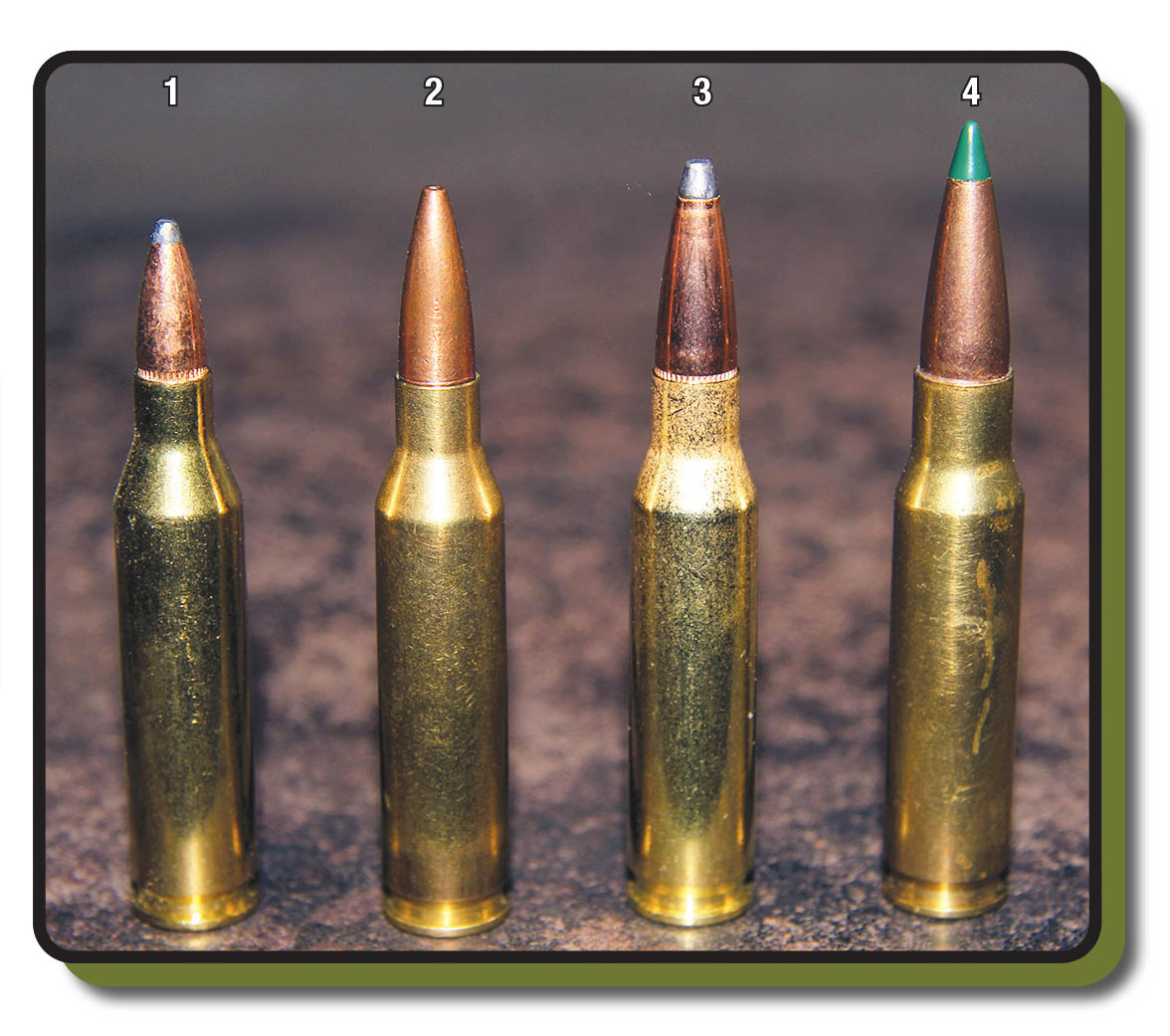
I loaded Speer 90-grain full metal jackets over maximum charges of IMR-4350 to collect scads of called-in coyotes and grey foxes for the raw-fur market, back when pelts fetched a $50 average. For eastern New Mexico’s desert mule deer, aoudad sheep and pronghorn, I chose Sierra’s 85-grain GameKing hollowpoint boat-tail and more IMR-4350. Not knowing any better, I loaded Nosler’s 100-grain Partitions and IMR-4350 to kill my first two bull elk – with neither getting out of sight.
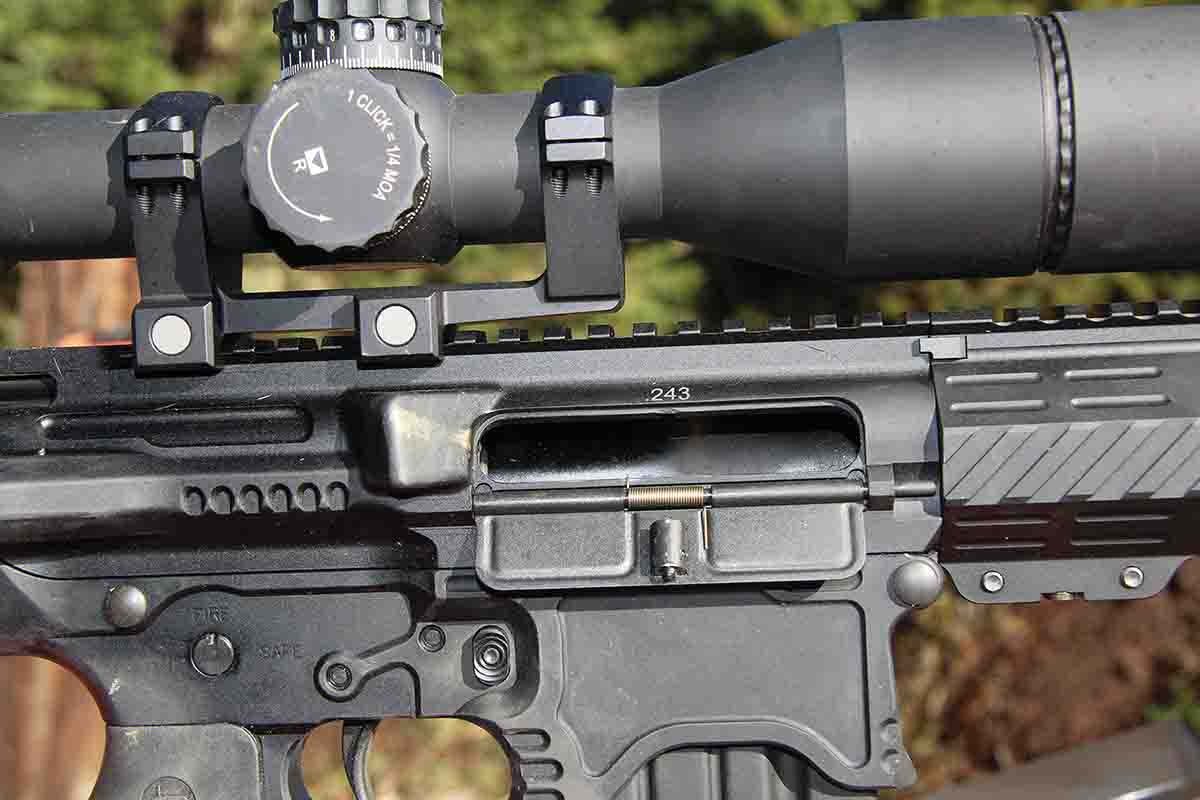
Those early experiences also cemented my love for the bolt-action rifle, meaning I was late to the AR party. I’ll also admit siding with a certain gun writer of note when he became the target of the outdoor cancel culture for typing somewhere that the AR-15 was a silly tool to bring to a varmint shoot. But then, while working on my book, The Predator And Varmint Hunter’s Guidebook (2018), I was determined to see what all the fuss was about. I secured a loaner Rock River Arms (RRA) 24-inch Varmint A4 LAR-15 with a .223 Wylde chamber. That rifle accounted for many ground squirrels during a spring immediately following major rotator cuff surgery.
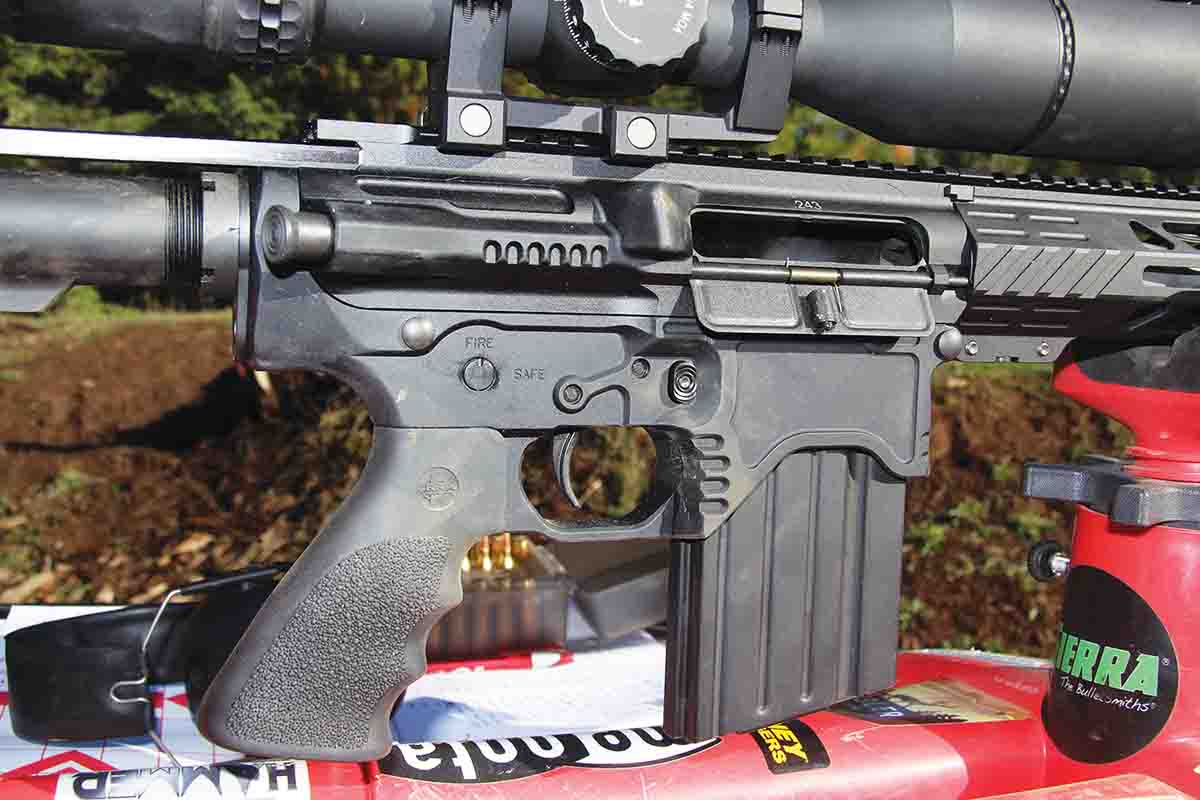
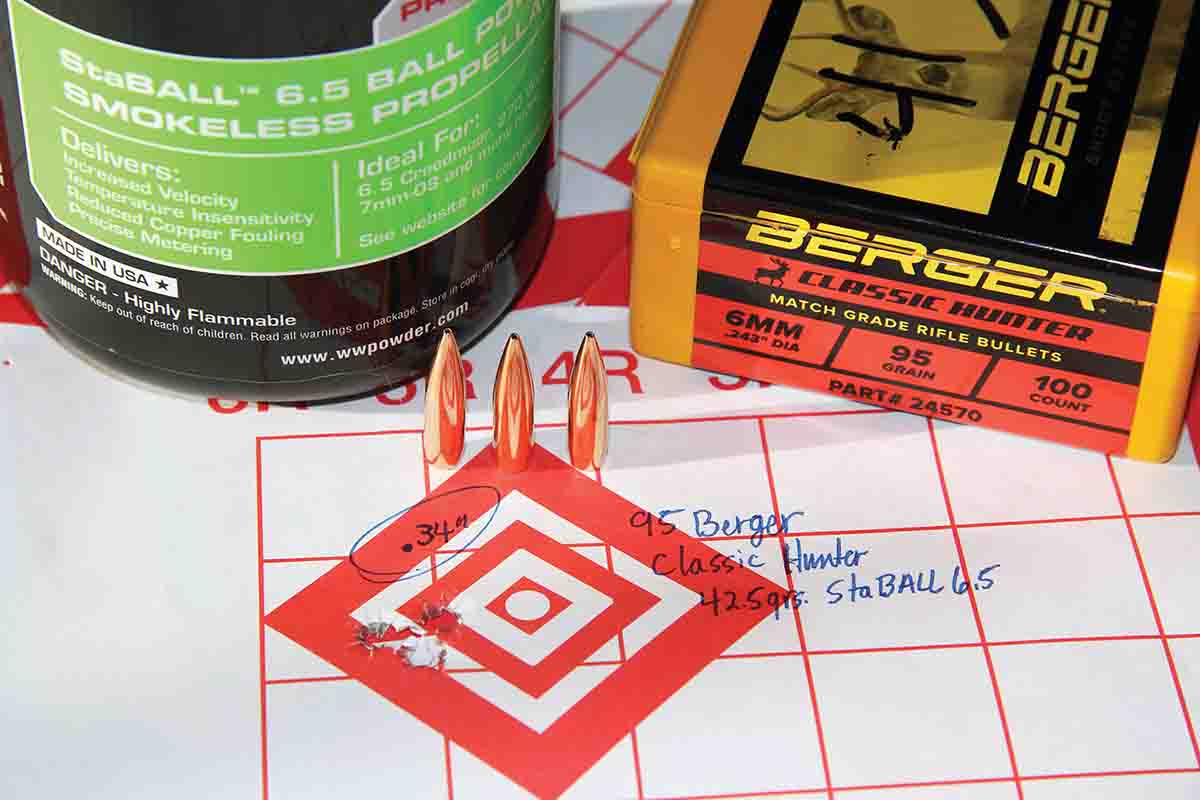
My AR attitude had taken a quick about-face and I now own several accurate AR-15s in various chamberings.
Having had such positive experiences with RRA rifles, I put trust in them when venturing into a new first – shooting a larger-framed AR-10. This one, and the rifle under review here, is RRA’s unique Predator HP LAR-8M chambered in my old favorite, the .243 Winchester.
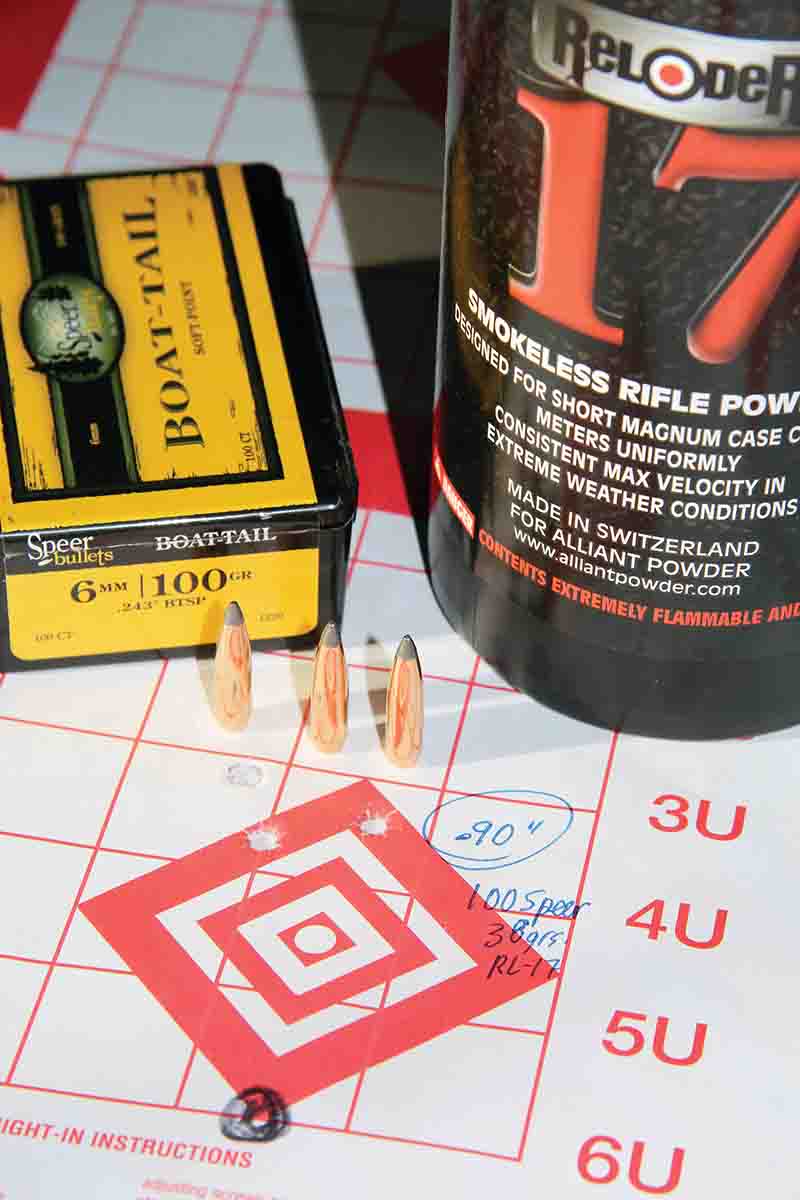
The A4 upper is a flattop design with an integral Picatinny rail for versatile optics mounting. A spring-mounted dust cover and chamber-assist button are included. A generous ejection deflector is milled behind the ejection port and showed it was doing its job by slowly taking on a brass patina during testing. The charge handle includes a standard latch lock and was fairly small, resulting in a few bloodied digits while working around the admittedly excessive 34mm-tubed Steiner T5Xi 3-15x 50mm scope added in a Nightforce 20-MOA Ultralite Unimount. However, the scope’s magnification did seem just about right during accuracy testing.
The generous 17-inch handguard was a RRA LAR-8 Lightweight Free Float Rail that is heavily skeletonized and wholly practical. The side and bottom flats included nine M-LOK slots apiece, allowing the addition of additional Picatinny rail sections to attach bipods and other accessories such as lights or lasers (gear I actually find useful during nighttime/thermal imaging hog hunts) or a side mount, two-piece bipod. The entire top length of the handguard includes a Picatinny rail, which would allow easy adaption of clip-on thermal sights. A low profile gas block sits within.
The 20-inch barrel was a tad short for my tastes, resulting in a somewhat obnoxious muzzle blast from the .243 Winchester round – though it certainly produced acceptable accuracy. As hinted, this is a fluted, stainless steel number, bead blasted to take the shine off and is cryogenically treated to relieve any residual stress following heat treating. Rifling twist was the .243 Winchester standard 1:10, which can be counted on to fully stabilize most varmint and big-game bullets, save the heaviest long-range and target options. The barrel did not have a muzzle brake, but that is an option. Taken as a whole, the rifle hits the scales at a hefty 9.2 pounds out of the box, 11.64 pounds unloaded with the addition of the optic. Despite its obvious mass, the rifle balanced and handled so well, it felt much lighter.
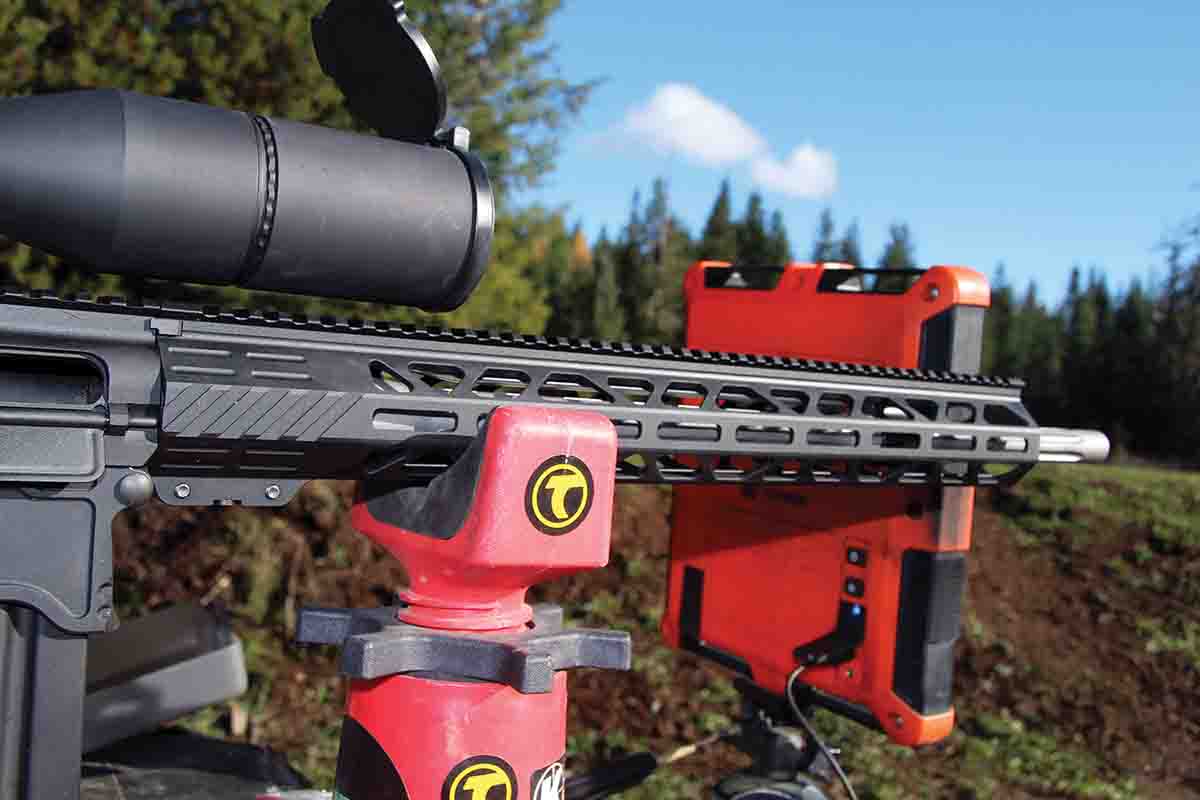
Operationally, the Predator HP LAR-8A includes a two-stage trigger. The first stage take-up is minimal, and the trigger broke fairly crisply at around 4.65 pounds. I found the trigger completely acceptable for an AR and any complaints would constitute nitpicking. The steel, 20-round magazine fit snuggly in the well, requiring some coaxing and wiggling before I became more familiar with it. The magazine allowed longer overall loaded lengths (OALs) than the freebore of the rifle’s chamber. I also found the 20-round magazine a bit excessive, especially for this cartridge. The RRA LAR-8 three- and five-round (and 20-round) polymer magazines are offered as additional options for $15.
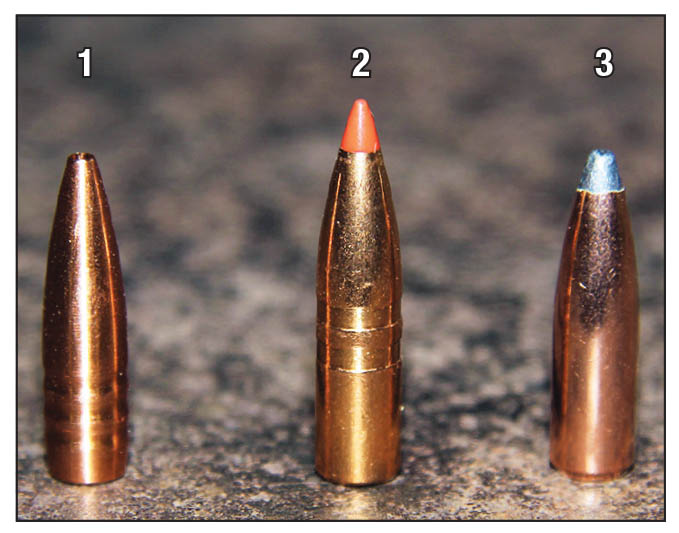
Rock River Arms promises 1-MOA accuracy at 100 yards with this rifle, which on average the rifle lived up to, while assembling the occasional smaller cluster when the right load combination was hit upon.
Factory ammunition consisted of Hornady’s American Whitetail loaded with its 100-grain InterLock boat-tail softpoint at an OAL of 2.61 inches. Hornady’s Superformance 95-grain SST (2.62-inch OAL) was added later. I also did some late horse trading for an older box of Winchester’s Super-X with 80-grain pointed softpoint bullets (2.65-inch OAL) and Federal Ammunition’s 100-grain softpoint (2.56-inch OAL). Hornady’s American Whitetail ammunition was the only factory load to break an inch, averaging .87 inch at 2,758 fps.
To this data was added a variety of handloads that included an array of hunting bullet styles and weights. Loads were assembled using a Redding National Match die set, with a full-length sizing die, micrometer head seating die and a third die allowing me to apply a light taper crimp in diffidence to the robust semi-auto cycling. Hornady brass scavenged from the factory ammunition, Winchester Large Rifle primers and an Area 419 ZERO Reloading Press were also utilized.
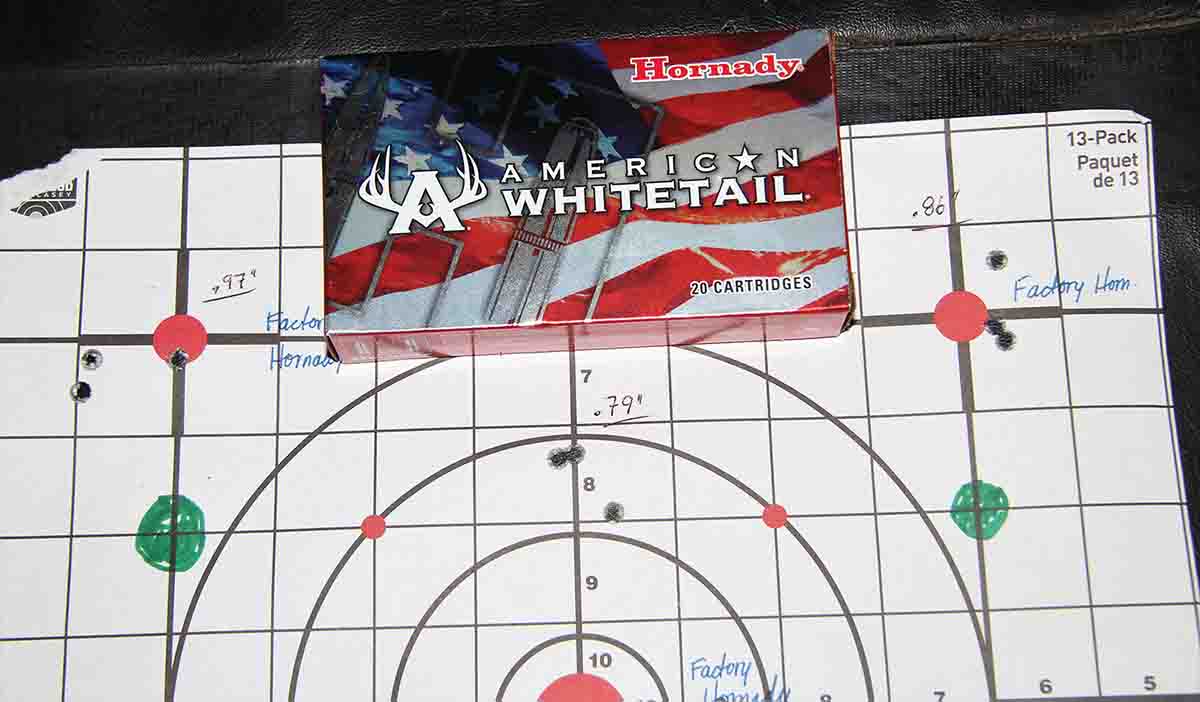
On the light end, bullets started with the 70-grain Hammer Bullets Hammer Hunter, a turned mono-copper “semi-boattail” hollowpoint with pressure-relief grooves. The design is fairly long for weight and is recommended by the company for deer-sized game. It includes a G7 ballistic coefficient (BC) of .167 and measures .93 inch long. Hammer recommends a minimum 1:10 rifling twist. Paired with 46.5 grains of Alliant Reloder 19, it provided a 1.02-inch group at 3,009 feet per second (fps).
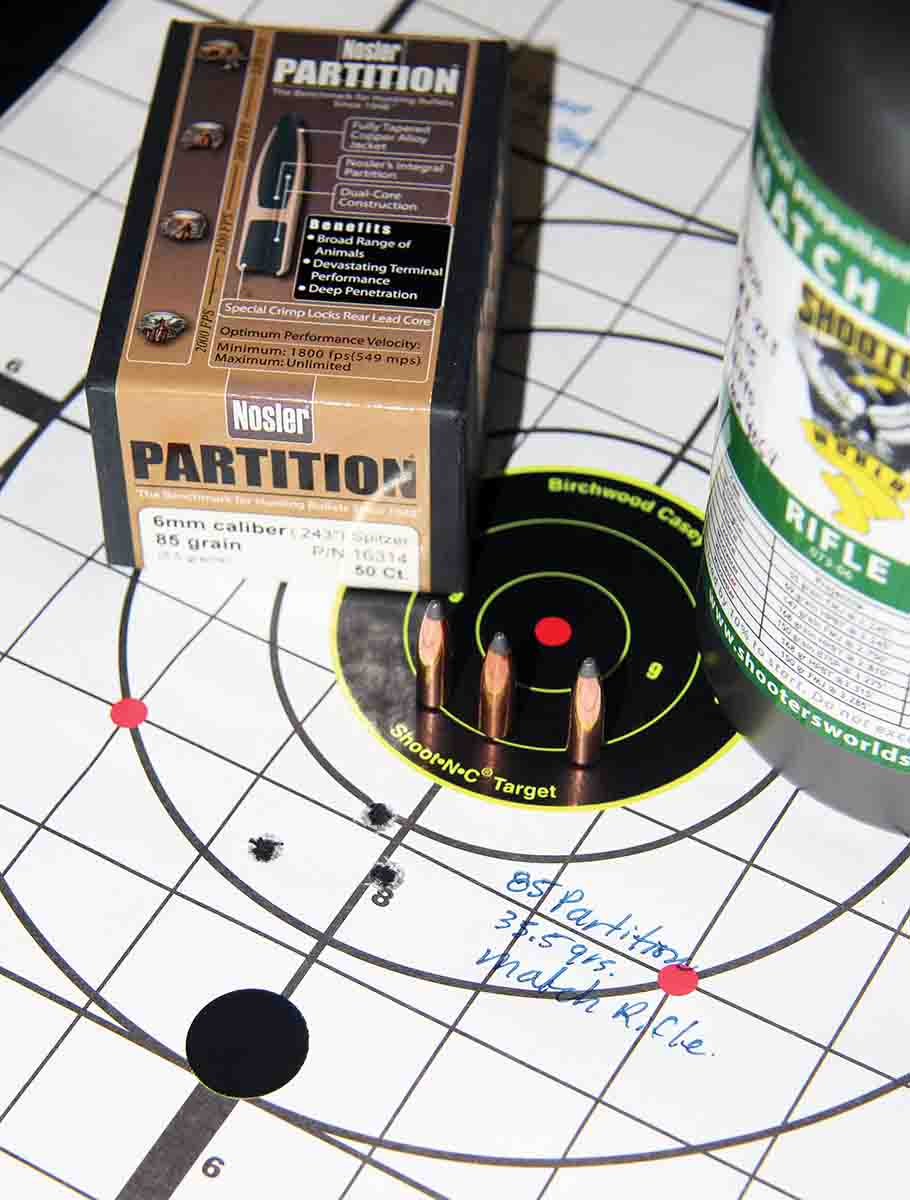
Nosler’s 85-grain Partition should require no introductions as the original controlled-expansion design with a dual-cavity design, lead tip and small rear crimp that serves as a mini boat-tail. This version measures .95-inch long, includes a .315 G1 BC and would make a fine choice for large deer or average black bears. Vihtavuori’s N540 (36.5 to 38.5 grains) and Shooters World Match Rifle (35.5 to 37.5 grains) were tried, with the best group measuring .82 inch and resulting from 35.5 grains of Shooters World Match rifle at 2,689 fps.
Getting into heavier hunting bullets, the Berger 95-grain Classic Hunter, with an impressive .434 G1 BC, would be my choice for longer shots at pronghorn or Coues’ whitetail across breezy expanses. The streamlined 1.065-inch hollow-point boat-tail design promises minimized drop and wind drift at distance. Shooters World SW-4350 (40 to 42 grains) and Winchester StaBALL 6.5 were loaded for this bullet. Forty grains of SW-4350 and 42.5 grains of StaBALL 6.5 proved the best combinations. The SW-4350 group measured .88-inch at 2,673 fps, the StaBALL 6.5 grouped the best of the entire trial, measuring .34 inch at 2,861 fps.
Speer’s 100-grain boat-tail softpoint is a sleek 1.07-inch bullet with a .446 G1 BC that has proven quite accurate from other rifles. This thin-jacketed bullet provides explosive terminal performance for long-range varmints or thin-skinned big game. IMR-4955 Enduron (44.5 to 46.5 grains) and Reloder 17 (38 to 40 grains) were paired with the Berger, the best groups measuring .94 inch using 44.5 grains of IMR-4955 (.94 inch at 2,860 fps) and 38 grains of Reloder 17 (.90 inch at 2,733 fps).
Finally, Hornady’s 100-grain InterLock softpoint was the toughest option tested, a tapered jacket with an internal copper ring checking expansion and creating beautiful mushrooming. With well-placed shots I’d trust this 1.085-inch, .405 G1 BC bullet to dispatch cow elk or the largest black bears. Shooters World Long Rifle printed a .67-inch group at 2,637 fps with 36 grains of powder, and a .73-inch group at 2,693 fps with 37 grains.
The Rock River Arms LAR-8M Predator HP .243 Winchester comes with a plastic hard case, one 20-round steel magazine and all necessary paperwork. It includes an MSRP of $1,655 as tested. The classic .243 Winchester cartridge and contemporary AR-10 design certainly made a welcomed pairing!


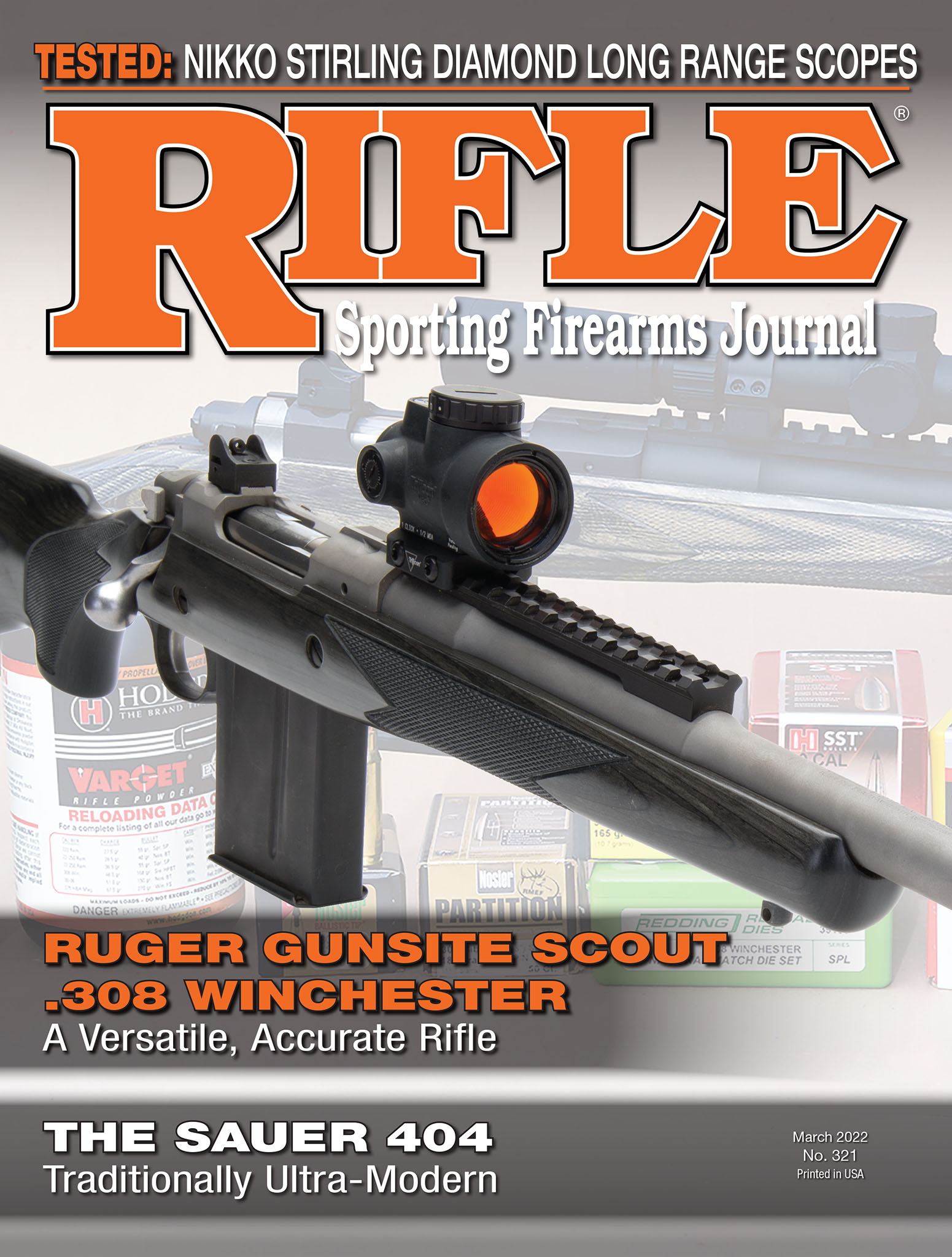
.jpg)
.jpg)